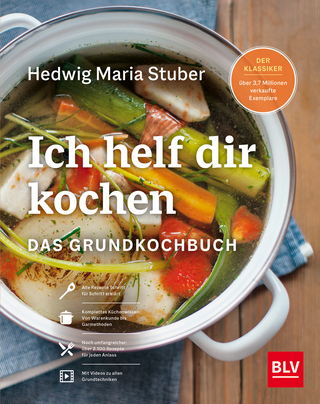
Production and Packaging of Non-Carbonated Fruit Juices and Fruit Beverages
Springer-Verlag New York Inc.
978-1-4613-5319-5 (ISBN)
In the period of about five years since the first edition of this book appeared, many changes have occurred in the fruit juice and beverage markets. The growth of markets has continued, blunted to some extent, no doubt, by the recession that has featured prominently in the economies of the major consuming nations. But perhaps the most significant area that has affected juices in particular is the issue of authenticity. Commercial scandals of substantial proportions have been seen on both sides of the Atlantic because of fraudulent practice. Major strides have been made in the development of techniques to detect and measure adulterants in the major juices. A contri bution to Chapter 1 describes one of the more important scientific techniques to have been developed as a routine test method to detect the addition of carbohydrates to juices. Another, and perhaps more welcome, development in non-carbonated beverages during the past few years is the rapid growth of sports drinks. Beverages based on glucose syrup have been popular for many years, and in some parts of the world isotonic products have long featured in the sports arena. A combination of benefits is now available from a wide range of preparations formulated and marketed as sports drinks and featuring widely in beverage markets world-wide. A new chapter reviews their formulation and performance characteristics. Another major trend in the area offruit-containing non-carbonated bever ages is the highly successful marketing of ready-to-drink products.
1 Authentication of orange juice.- 1.1 Introduction.- 1.2 Analysis.- 1.3 Statistics.- 1.4 Recent developments in orange juice adulteration.- References.- 2 Chemistry and technology of citrus juices and by-products.- 2.1 Principal citrus cultivars.- 2.2 Composition and structure of citrus fruits and juices of various cultivars.- 2.3 Operational procedures and effects on quality and shelf life of citrus juices.- 2.4 Citrus juice flavor enhancement with natural citrus volatiles.- 2.5 Pectic substances and relationship of citrus enzymes to juice quality.- 2.6 Effect of time, temperature and other factors on citrus products.- References.- 3 Grape juice processing.- 3.1 History of grape juice processing in North America.- 3.2 Grape cultivars.- 3.3 The chemistry of grape juice.- 3.4 Modern grape juice processing.- 3.5 Process alternatives.- References.- 4 Tropical fruit juices.- 4.1 Introduction.- 4.2 Guava.- 4.3 Mango.- 4.4 Passionfruit.- 4.5 Pineapple.- 4.6 Other tropical fruits.- 4.7 Tropical fruit juices in Europe today.- 4.8 The future.- Further reading.- 5 Growing and marketing soft fruit for juices and beverages.- 5.1 Introduction.- 5.2 Selling the fruit crop: the options.- 5.3 Producing the soft fruit crop.- 5.4 Blackcurrants.- 5.5 Control of fruit pests and diseases.- 5.6 Pests and diseases of blackcurrants.- 5.7 Other soft fruits.- 5.8 Storing fruit for processing.- 5.9 The future—blackcurrant research and development (R & D).- 6 Apple juice.- 6.1 General background.- 6.2 Natural style and opalescent juices.- 6.3 Clarified juice and concentrate.- 6.4 Authentication and adulteration.- 6.5 Composition.- 6.6 Juice tests.- 6.7 Note.- References.- 7 Equipment for extraction of soft and pome fruit juices.- 7.1 Introduction: modern juice processing methods.- 7.2 Juiceextraction systems.- 7.3 Pre-treatment with pectolytic enzymes.- 7.4 Post-press clarification.- 7.5 Concentration/aroma recovery.- 7.6 Pasteurisation.- 7.7 Fruit juice plant layout.- 7.8 Summary.- References.- 8 Processing of citrus juices.- 8.1 Introduction.- 8.2 Fruit harvesting and transport.- 8.3 Unloading and storage of fruit.- 8.4 Fruit transfer from storage bins to extractors.- 8.5 Juice extraction and finishing.- 8.6 Juice processing for pasteurized single strength.- 8.7 Juice processing for concentrate.- 8.8 Essence recovery.- 8.9 Chilled juice from concentrate.- 8.10 Pulp wash.- 8.11 Frozen pulp processing.- 8.12 Manufacture of citrus cold-pressed oil.- 8.13 Manufacture of livestock feed from citrus peel.- Further reading.- 9 Juice enhancement by ion exchange and adsorbent technologies.- 9.1 Overview.- 9.2 History.- 9.3 Resin chemistry.- 9.4 Adsorbents.- 9.5 Applications.- 9.6 Summary.- References.- 10 Processing systems for fruit juice and related products.- 10.1 Introduction.- 10.2 Design parameters.- 10.3 Plant configuration.- 10.4 Other parameters for juice processing.- 10.5 New developments and technologies.- Acknowledgements.- Further reading.- 11 Packaging systems for fruit juices and non-carbonated beverages.- 11.1 Introduction.- 11.2 The cold fill fresh system.- 11.3 The hot fill system.- 11.4 Filling equipment for gable top cartons.- 11.5 Aseptic Pure-Pak.- 11.6 Packing materials for gable top cartons.- 11.7 Product protection and product/pack interaction.- 11.8 Packaging of frozen concentrated juices (FCJ).- 11.9 Filling in glass containers.- 11.10 Plastic containers and pouches.- References and further reading.- 12 The formulation of sports drinks.- 12.1 Introduction.- 12.2 Sports drinks.- 12.3 The effect of exercise.- 12.4 Physiological considerations.- 12.5 The essentials of a sports drink.- 12.6 Formulation considerations.- 12.7 Other nutrients.- References.- 13 Nutritional value and safety of processed fruit juices.- 13.1 Introduction.- 13.2 Composition of fruit juices.- 13.3 Composition of individual fruit juice products.- 13.4 Levels of consumption and nutritional significance.- 13.5 Fruit juice and dental caries/erosion.- 13.6 Fruit juice safety.- References.- 14 Legislation controlling production, labelling and marketing of fruit juices and fruit beverages.- 14.1 Fruit juices, concentrated fruit juices and fruit nectars.- 14.2 Non-carbonated fruit drinks and beverages.- References.- 15 Water and effluent treatment in juice processing.- 15.1 Water treatment.- 15.2 Effluent management and treatment.- References.
| Zusatzinfo | XVI, 429 p. |
|---|---|
| Verlagsort | New York, NY |
| Sprache | englisch |
| Maße | 155 x 235 mm |
| Themenwelt | Sachbuch/Ratgeber ► Essen / Trinken ► Grundkochbücher |
| Technik ► Lebensmitteltechnologie | |
| ISBN-10 | 1-4613-5319-X / 146135319X |
| ISBN-13 | 978-1-4613-5319-5 / 9781461353195 |
| Zustand | Neuware |
| Haben Sie eine Frage zum Produkt? |
aus dem Bereich


